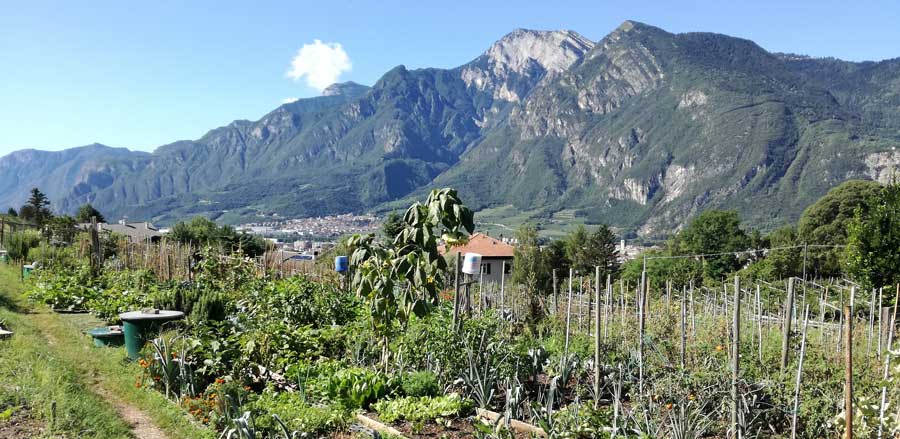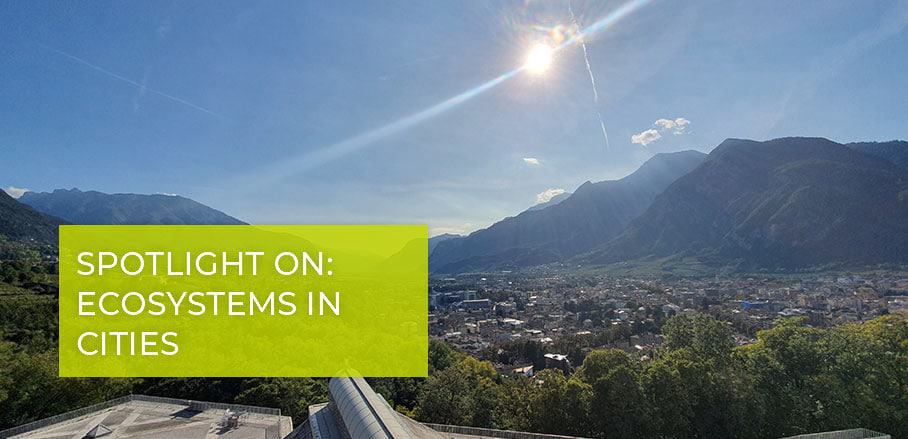Relaxation, Happiness, Health – Why We Need Urban Ecosystems
The importance of green spaces is increasingly acknowledged as an important aspect in urban development. Davide Geneletti calls on urban planners to properly understand the relationships between ecosystems and residents to make the most efficient use of the services ecosystems provide to cities and their residents.
The Effects of Green Spaces
Early this year, I was finally offered to move from what is probably the tiniest office of the whole Department to a larger one. Much to the surprise of my colleagues, I turned the offer down. Too fresh in my mind was the literature on the effects of green space on relaxation, concentration, and happiness. These effects are related not only to experiential activities (that is: go out and play, study, walk in nature), but also, and perhaps less intuitively, to mere contemplation.
Just the view of nature and green and blue spaces from your office is bound to make you less stressed, more focussed, calmer, healthier. The same, by the way, applies to classrooms and hospital rooms. Concerning the former – although the evidence is scattered and the conclusions not yet solid – several studies revealed correlations between pupils’ performance and the greenness of the area surrounding schools. This is definitely something to be considered with care when taking decisions about our urban space.
Thus, considering that I teach ecological planning and ecosystem services, I decided to walk the talk. And I chose the tiny office with superb landscape view over the twice-the-size one facing the inner buildings, hoping to spur my scientific productivity and mental well-being.
Including Ecosystem Services in Urban Planning
In my planning lectures, I describe these contributions to well-being provided by green space as cultural, or intangible, ecosystem services. And I try to explain how important it is to explicitly include information on ecosystem services in urban and spatial planning. For example, finding the most suitable location and design for a new urban park is a problem that need to be studied with care, by considering the distribution of potential beneficiaries (and their needs and concerns) of the expected services that the park will deliver.
Ecosystem services provided by green space in cities include cultural services, such as recreation opportunities, but also regulating services, such as micro-climate regulation, noise reduction, and flood mitigation. For example, parks locally reduce air temperature (cooling capacity) thanks to shading and evapo-transpiration, contributing to mitigate the urban heat island effect.
This temperature reduction is felt both inside the green space, and to a certain extent within a buffer area surrounding it. Hence the importance of properly designing green spaces (for example by selecting the tree species and by calculating density and distribution so that cooling is maximised), as well as siting them (by considering the location of critical facilities such as schools, or the presence of vulnerable population groups, such as the elderly).
Awareness of Key Ecosystem Functions
Urban development plans commonly include proposals of tree lines or vegetated corridors along main roads to shield residential areas from noise. As a matter of fact, trees and shrubs (but also unsealed soil cover, such as grass) can contribute to deflect acoustic waves, hence reducing noise levels.
However, this contribution is effective only if the vegetated area has a minimum width and tree density. These details are often overlooked in urban planning, leading to proposals that fail to provide the expected benefits. Therefore, planners need to be aware of the key ecosystem functions that determine the provision of specific services, and of the factors that influence them, such as size, shape, composition, and spatial arrangements of the different components that form a green area. This allows an optimal design of green space, targeted to provide the ecosystem services that are needed in the receiving urban area.
Community Gardens: Popular and Productive
If I lean out my office window and look east, beyond the patches of forest and vineyards, I catch sight of another form of green space that is becoming increasingly popular in our cities: community gardens. These are plots of (public) land that is farmed by a group of people, either collectively or in individual plots. Community gardens offer one last category of ecosystem services: provisioning services.

© Susana Orta Ortiz
Users can grow fruits, vegetables, and aromatic herbs: “material” goods that contribute to their wealth and well-being. However, the picture is more complex, and the literature clearly shows that community gardens provide a much wider range of benefits that are of non-material nature: strengthening a sense of community, enhancing social interaction, contributing to physical and mental health, offering opportunities for environmental education, et cetera.
As a matter of fact, after having interviewed about a hundred of community garden’s users in the city of Trento last summer, we reached the conclusions that social and health-related drivers for engaging in urban farming were at least as important as the economic ones.
This emphasises the need for urban planners to properly understand and describe the multiple relations between urban ecosystems and human well-being. The ecosystem service approach is instrumental in this, and it offers planners a framework to design and compare planning decisions that account for the complex interactions between the ecological and the socio-economics elements of the urban context in which they operate.
- Relaxation, Happiness, Health – Why We Need Urban Ecosystems - 26. March 2020
